Glacial Features in Little Cottonwood Canyon
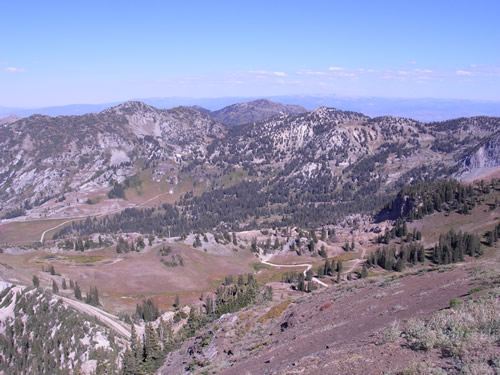
Assuming that Alta and Little Cottonwood Canyon were recently glaciated we should expect to see most or all of the glacial features described above. Indeed we do. The glaciers first formed as a cluster of cirques in upper Albion Basin. These cirques began at Cecret Lake, Glory Hole, Sugar Bowl and Catherine’s Bowl and gradually […]
The Present is the Key to the Past
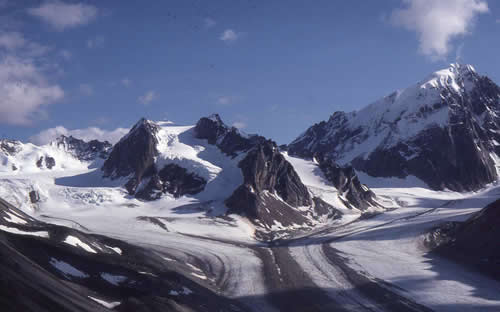
A second photo from the western Alaska Range shows additional erosional features common to glaciers. Between two glaciated valleys a knife edge ridge is often formed called an arête. Where a mountain peak is surrounded by glaciers on all sides a pyramid-shaped horn is formed; the Matterhorn in Switzerland is the most famous example of […]
The Present is the Key to the Past
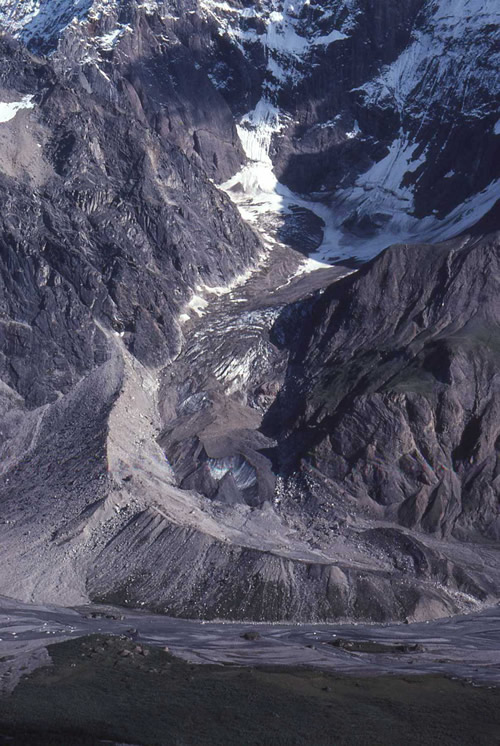
On the north side of Mt. Hesperus there is a small active glacier. This glacier is unusual in that the entire glacial system from hanging wall to terminus can be observed in one photograph and the glacier displays most of the major physiographic features formed in this environment. The source area of the glacier is […]
The Present is the Key to the Past
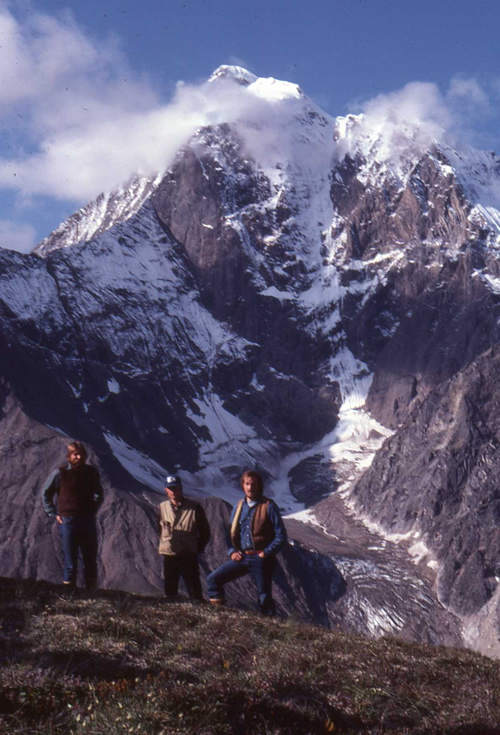
Ancient glacial features are interpreted by comparing them with glacial features formed in current active glaciers. Mount Hesperus is a horn in the Revelation Mountains in western Alaska. Mt. Hesperus rises from the Revelation Mountains in the western Alaska Range.
Introduction to Glaciation
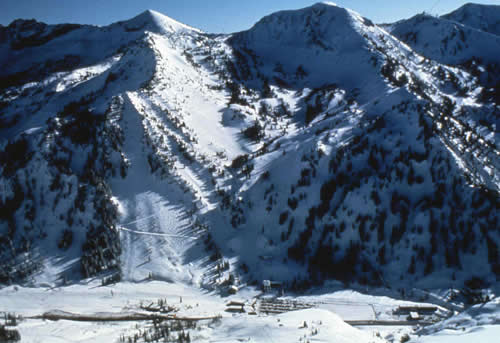
The Wisconsin Glaciation, occurred in North America between 5,000-65,000 years before present. The last major glacial event peaked about 16,000 years ago. In eastern and central North America enormous continental glaciers scoured the landscape at this time. In much of the west, alpine glaciers formed in the higher mountain ranges. Alpine glaciers form when winter snowfall […]
Introduction to Glaciation
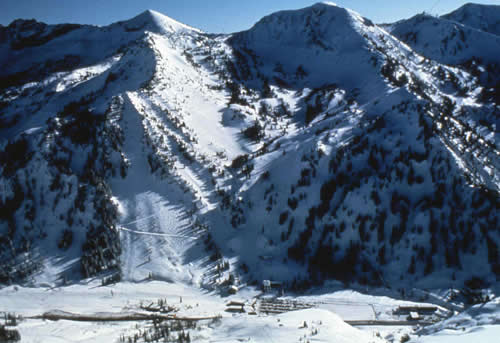
The Wisconsin Glaciation, occurred in North America between 5,000-65,000 years before present. The last major glacial event peaked about 16,000 years ago. In eastern and central North America enormous continental glaciers scoured the landscape at this time. In much of the west, alpine glaciers formed in the higher mountain ranges. Alpine glaciers form when winter snowfall […]
Proterozoic Rocks
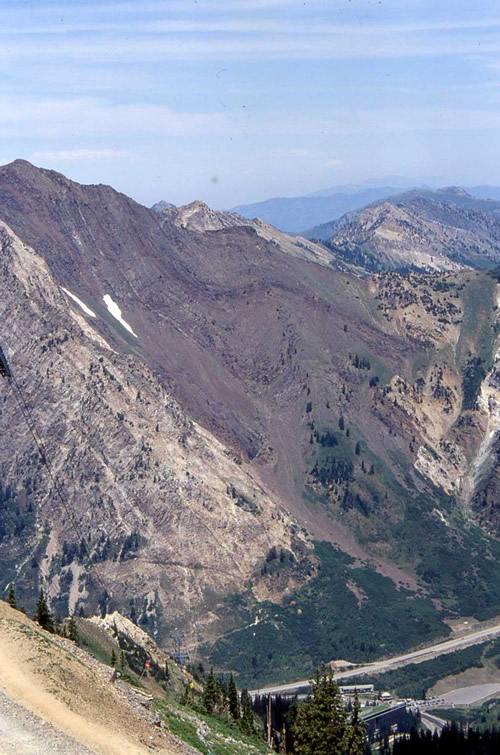
The oldest rocks you will see at Alta form the dramatic outcrops on the southeast flank of Mount Superior on the north side of Little Cottonwood Canyon. These are extremely old rocks (Upper Proterozoic Era, + 800 million years). The lighter brown rocks to the west consist of the Little Cottonwood Formation. The dark brown […]
Paleozoic
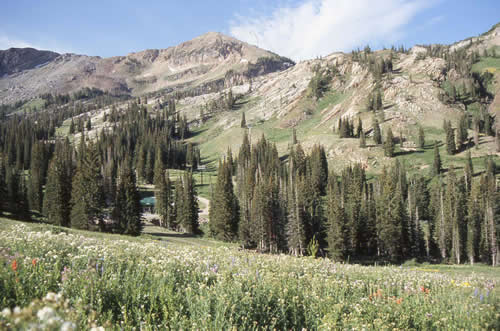
The bulk of the rocks at Alta, the rocks that we ski on, record the advances and retreats of ancient oceans that occupied this area of North America between 540 and 330 million years ago (Paleozoic Era). The oldest of these rocks is the Tintic quartzite a hard, dense, buff-colored rock that generally forms rounded […]
Proterozoic Rocks

Proterozoic RocksThe oldest rocks you will see at Alta form the dramatic outcrops on the southeast flank of Mount Superior on the north side of Little Cottonwood Canyon. These are extremely old rocks (Upper Proterozoic Era, + 800 million years). The lighter brown rocks to the west consist of the Little Cottonwood Formation. The dark […]
Bedrock Geology of Alta
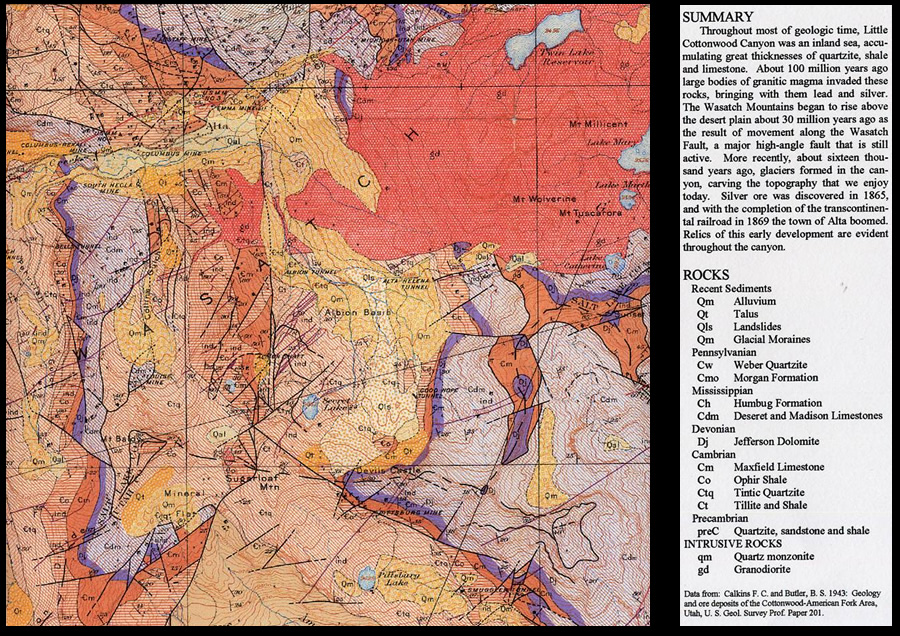
The bedrock geology of Alta and the surrounding area was mapped by the U. S. Geological Survey in 1943. U.S. Geological Survey, 1943
